Stay in the know on all smart updates of your favorite topics.
Amsterdam and Haarlem launch groundbreaking sustainable artificial turf pitch innovations

The pioneering innovations were presented of the Scale Up Future-proof artificial turf pitches project, a collaboration between Amsterdam and Haarlem focused on sustainable artificial turf pitches. Over the next few years, more than 250 sports pitches in both cities will be transformed into circular, energy-generating and climate-adaptive sports venues. These artificial turf pitches can not only generate and store energy, but also involve smart water management. An approach that is globally relevant for urban sports infrastructure.
Three consortia collaborate on the sport pitch of the future
The three selected consortia Antea Sport, EnergieVeld and GOO4iT together comprise more than 15 market players. They join forces within this innovation partnership, where there is room for long-term collaboration, co-creation and scalable innovation. The pioneering solutions will make it possible to cool down sport pitches on warm days, help dispose of and collect rainwater, make the pitches more pleasant for the users and possibly even generate energy for the surrounding area. Find out how these innovations are shaping the sport pitch of the future here.
Two municipalities: joint procurement
The Scale Up Future-proof artificial turf pitches project is a unique collaboration between two municipalities and market players. The municipalities jointly procure pooling their purchasing power and use an innovation partnership to challenge the market to test and scale up innovative and sustainable solutions. In doing so, the solutions are also scalable and transferable to other cities in the Netherlands and Europe.
From prototype to pilot fields
The first prototype fields will be constructed in Amsterdam and Haarlem in 2026, in different capacities and combining multiple innovations, where they will be extensively tested and monitored for a year. Successful concepts are then scaled up to full-scale pilot pitches and tested and monitored for another year. This will form the basis for the new standard of sustainable sports pitches, with potential for adoption in other cities around the world. At the same time, existing pitches are already being improved with the most sustainable solutions available, making an immediate impact from the start. The project thus shows how cooperation between municipalities and market players can lead to innovative, climate-proof sports infrastructure with international relevance.
Join us
This project provides cities worldwide a blueprint for sustainable, smart, and future-proof artificial turf pitches. Interested municipalities and industry partners can get in touch and subscribe to our news updates by sending an e-mail to: sportveldvandetoekomst@amsterdam.nl.
Curious about... Het lichaam als laatste grens

Hoe technologie en wetenschap ons menszijn veranderen
Wat betekent het om mens te zijn in de 21e eeuw, waarin mens en technologie steeds inniger zijn verstrengeld? Kunstmatige intelligentie, genetische modificatie, neurotechnologie en medische innovaties veranderen niet alleen de wereld om ons heen, maar ook de grenzen van wie wij zijn. Ons lichaam, ons bewustzijn, onze identiteit en zelfs onze ervaring van de werkelijkheid zijn in beweging.
Op 5 november verandert A Lab in een toekomst-experience waarin lichaam en geest samensmelten met technologie en wetenschap. Tijdens de zesde editie van Curious About… onderzoeken we hoe technologie ons menszijn verandert. Hoe het onze omgeving vormgeeft, welke relaties we aangaan, welke ethische grenzen op de proef gesteld worden en hoe technologie een verlengstuk wordt van jou als mens, of zelfs onder je huid kruipt? Een programma waarbij je je ogen uitkijkt en je aan het denken wordt gezet wie wij als mens zijn en worden nu technologische ontwikkelingen voorbij razen.
Nieuwsgierig? Meer info & tickets vind je op a-lab.nl.
Wat kun je verwachten?
Tijdens de interactieve demo’s door A Lab, ga op thema-expeditie langs ervaringen, kunst, verhalen, wetenschap en toekomstvisies:
... Dompel je onder in een zintuigelijke VR-ceremonie van Nemo Vos, waarin spiritualiteit, wetenschap, lichaam en tech samensmelten tot één ervaring
... Robin Coops presenteert een virtuele wereld vol verlangens, intimiteit en consent, en onderzoekt hoe onze digitale relaties ons menszijn raken.
... Muzikant en innovator Chagall geeft het digitale een ziel en laat met muziek lichaam en tech samensmelten
... Ervaar de NextMind technologie en stuur digitale systemen aan met je gedachten
... Hoe werkt dat eigenlijk na je dood, wil je dan doorleven in AI?
... Verken de grenzen van jouw lichaam tijdens een geleide meditatie.
... Krijg een inkijkje in de nabijheid en troost die een machine aan een mens kan geven.
... Ontmoet Phil, die dankzij een geïmplanteerde chip betaalt, reist en deuren opent met zijn hand.
... Ontdek hoe liefde en technologie samengaan met de karakters uit de Human docu AI Love.
... Onderga het rubber hand experiment zelf en ervaar hoe je brein lichaam en realiteit construeert
Keynotes & panel
Na afloop van de expeditie, ontvangen we vier keynote speakers en het panel op het podium.
... Johan Hoorn (Hoogleraar Sociale Robotica & AI) ontrafelt de ontwikkelingen door een technologische bril: wat gebeurt er al en waar bewegen we naartoe?
... Ajuna Soerjadi (Directeur Data-Ethiek, Jonge denker des Vaderlands en TED spreker) schijnt haar licht op ethische vraagstukken en grenzen: hoe raakt technologie mens en maatschappij?
... Marleine van der Werf (Filmmaker & Visual Artist) bevraagt in een intieme, zintuiglijke ervaring onze kwetsbare band met het lichaam en bewustzijn, met haar multidisciplinaire ‘Disembodied' project.
... De blinde Simon Dogger (prijswinnend ontwerper, van o.a. Dutch Design Award) neemt ons met zijn persoonlijke verhaal mee in hoe technologie en zintuiglijkheid elkaar kunnen versterken.
Het programma overzicht
12:30 - Inloop
13:00 - Opening
13:00 - Interactieve demo's door A Lab
15:30 - Keynotes & Panel
17:00 - Napraat & borrel
Meer info via a-lab.nl
Tickets via Eventbrite
Waag Open: Electric Garden

In de hoop dat technologie ons uit de klimaatcrisis redt, worden er miljoenen geïnvesteerd in technologieën op het gebied van kunstmatige intelligentie. Tegelijkertijd genereert de hele IT-industrie nu al 900 Megaton aan CO2 per jaar. Dat is zeven keer zoveel als de uitstoot van heel Nederland in 2023. Technologische innovatie en een gezond ecosysteem lijken niet samen te gaan. Kunnen technologie en natuur samenwerken bij het redden van onze planeet?
Kunstenaar Sunjoo Lee experimenteert in haar project ‘Electric Garden’ met een elektriciteitsproducerende tuin. Zolang het ecosysteem in haar tuin bloeit, kan elektriciteit worden opgewekt. Tijdens deze Waag Open in juli maken we een eigen Electric Garden in de Waag. In een boeiende workshop neemt Sunjoo je mee in de wereld van regeneratieve technologie en leer je hoe de natuur als duurzame energiebron kan fungeren.
Programma
| 19:15 - 19:30 uur | Inloop |
|---|---|
| 19:30 - 19:45 uur | Welkom & introductie |
| 19:45 - 21:30 uur | Workshop Electric Garden |
Over Electric Garden
Electric Garden verkent op creatieve wijze de mogelijke samenwerking tussen natuurlijke ecosystemen en digitale systemen. De tuin produceert elektriciteit via het metabolisme van anaerobe bacteriën die in natte grond leven, met behulp van een technologie die Microbial Fuel Cells wordt genoemd. Elke container werkt als een batterij en is uitgerust met elektroden die de elektronen oogsten die door de bacteriën worden uitgezonden. De planten en insecten in de tuin voeden de bacteriën. Zolang het ecosysteem bloeit, kan elektriciteit worden opgewekt.
Over Sunjoo Lee
Sunjoo Lee is een interdisciplinair kunstenaar. Haar werk bevindt zich op het snijvlak van kunst, technologie en ecologie. Ze is gevestigd in Nederland en Zuid-Korea en is gefascineerd door het gebruik van elektronica en digitale hulpmiddelen die het menselijk belang overstijgen. In haar werk verkent ze onderwerpen als meer dan menselijke filosofie, emergentie, biomimicry, toekomstige vormen van symbiose en permacomputing.
Waag Open
Elke eerste donderdagavond van de maand opent Waag haar deuren! Kom langs om te discussiëren en te doen. Want we gaan niet alleen in discussie over maatschappelijke thema's en de toekomst – je leert daarnaast ook altijd iets praktisch. Iets dat je altijd al hebt willen uitproberen, zoals de 3D-printer in het FabLab, of juist iets dat je nooit had verwacht, zoals uitpluizen hoe DNA in elkaar zit in ons biotech-lab. Waag Open vindt plaats in de maakplaatsen op de eerste en tweede verdieping van het historische Waaggebouw op de Nieuwmarkt.
Toegankelijkheid
Mocht je krap bij kas zitten en wel graag aan dit evenement willen deelnemen, neem dan contact op met sanna [@] waag [punt] org.
Urban Clean Air Roundtable

I'm reaching out to warmly invite you to join an upcoming roundtable we’re organizing on Tuesday June 17th focused on clean air in cities (Flyer is attached).
Given Amsterdam InChange's strong role in engaging professionals and communities in environmental monitoring, we believe your perspective would be highly valuable in the conversation. We also see this as a great opportunity to share your work and connect with other researchers, policy makers, and civil society actors active in the clean air space.
The content is a round table session, in which we share what is being worked on and what possible future developments are from different perspectives. The program for the day:
- 11:00 Welcome
- 11:15 Introduction
- 11:30 Presentations on current research/ policies
- 12:45 Lunch
- 13:30 Brainstorm: what-else-can-we-do-and-who-would-we-need-for-that?
- 14:45 Closing up with ten-agreements-plan
We still have a few speaking opportunities available, so if you or someone from your team would be interested in presenting your work or simply joining the discussion, we’d be delighted. Please feel free to email me or my colleague Sanne (sanne.van.breukelen@cenexgroup.nl) directly if you'd like more details or if you’d like to participate.
Neem je werk en je uitdagingen mee naar buiten en vier Outdoor Office Day in het Amsterdamse Bos
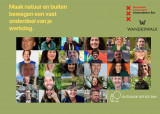
De stedelijke natuur als jouw werkplek.
Dit jaar in het Amsterdamse Bos waar iedereen duurzame leiders, toekomstdenkers & doeners kan ontmoeten. Zij staan klaar om met jou een rondje Amsterdamse Bos te lopen. Boek een één-op-éen wanderwalk om jouw onderwerp of uitdaging te bespreken.
Of neem jouw overleg mee naar buiten of kom met je laptop het bos in. Inspirerende ‘collega’s’, frisse lucht vers van de bomen en natuurlijk een duurzame barista. Het grote buitenkantoor is 12 juni ingericht met buiten werkplekken & inspiratie.
Outdoor Office Day 2025
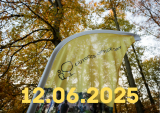
On June 12th 2025 we will celebrate the 7th edition of the international Outdoor Office Day. It’s an open invitation to take your work outside, reconnect with the surrounding urban nature around your office.
This year’s theme is 'Connecting with each other’: with your direct colleagues, colleagues from other departments, neighbours, or external relations. Please join the growing network of individuals and companies that take their work outside more and more often. Get inspired whilst you spend time surrounded by urban nature. This enhances new and meaningful relationships, stimulates the flow of good ideas and supports the forging of valuable collaborations.
Please meet our partners and participants:
https://www.outdoorofficeday.nl/participants
If in Amsterdam we invite for wanderwalk with sustainable leaders. Join us in Amsterdamse Bos to discuss your dilemma's, learn from each other and connect.
Vacancy: PhD position on The Organization of Innovation for Sustainability Transition at Vrije Universiteit Amsterdam
Have you obtained a master's degree in social and/or organization sciences, and would you like to study innovation and change? Then consider joining our interdisciplinary team with a PhD research on accelerating sustainability transitions!
This PhD position is part of an interdisciplinary team of three PhD researchers, one postdoc, and two senior researchers in the project ‘EXTRA’: <em>From EXperiment to sustainable change: TRAnsformative methodologies for innovation and learning</em>. EXTRA is a collaboration between multiple universities and public and private partners to research and advance physical and experimental environments as enabling methodologies for learning and innovation, also known as living labs.
Living labs are applied by various change-makers, including governmental actors, industry partners, NGOs, researchers, and citizens, to co-create innovations. However, while much experimentation and innovation occur, achieving long-term systemic change remains difficult. Therefore, the main purpose of EXTRA is to amplify the transformative power of living labs with novel insights, instruments, and human capacities, thus enabling change-makers to make sustainable changes and societal impacts.
In the consortium this PhD research will focus on the organization of innovation to accelerate sustainability transition. More specifically, by gathering knowledge and analyses across different fields and cases, this research will identify and validate (inter)organizational approaches, interventions, and business models to overcome barriers and enable the public-private collaboration needed for embedding, translating, and scaling innovations.
For more information about the project, please visit: https://www.nwo.nl/nieuws/financiering-voor-onderzoeksproject-over-fysieke-experimentele-omgevingen ; https://www.tudelft.nl/2024/bk/nwo-financiering-voor-innovatief-onderzoek-naar-fysieke-experimentele-omgevingen.
ThingsCon Exhibition and Salon: Provotypes interactions with city and citizens
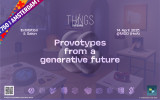
Imagine a world where everyday objects are imbued with the power of generative AI. What possibilities and challenges would emerge? ThingsCon aims to explore this frontier by inviting designers to create provotypes of the near future “generative things”.
To ignite imagination and foster meaningful discussions, we like to use the concept of “provotypes” – provocative prototypes of generative things. These tangible glimpses into tomorrow are catalysts, opening up critical dialogues about our impending relationships with AI-infused objects.
The exhibition “Generative Things” premiered at TH/NGS 2024 on 13 December 2024 in Volkshotel Amsterdam and will travel to other places in 2025, sparking conversations and imagination. ThingsCon organizes this initiative in collaboration with Master Digital Design of Amsterdam University of Applied Sciences, Waag Futurelab, and is part of the Amsterdam 750 futures program.
14 April: exhibition and workshop
Next up, we’re taking Generative Things to Amsterdam University of Applied Sciences. Our next public event, scheduled for late 14 April, will feature:
- An updated exhibition with new and refined provotype designs
- An in-depth reflection workshop relating the provotypes to city life
We’re revisiting the provotypes to create “situated designs” that respond to Amsterdam’s unique context. By partnering with local societal organizations, we’ll develop specific scenarios to test our provotypes in real-world settings, bringing the future of Generative Things to life in our city’s streets and spaces.
The outcomes will be an inspiration and a point of departure for a speculative design workshop on 15 April to create a future zine. We have a separate RSVP for this workshop day.
The program of the Salon:
14:00-15:00 Visit the exhibition with provotypes
15:00-17:00 Workshop to sketch out interactions in the city with each provotype
- introduction on the backgrounds
- short 3 min pitches by designers of the provotypes
- discussing the provotypes in relation to the categories
- formulate takeaways
17:00-19:00 Share results, drinks
If you can not make it to the workshop but like to see the results, feel free to drop by at 17h.
Location
The Salon and the Makeathon will take place Monday 14 April at the location of Master Digital Design, Theo Thijssenhuis building, 4th floor, Wibautstraat Amsterdam.
Read more about the background of the project on the website.
Online course Just Sustainability Transitions

Across six interactive online sessions, this course offers the tools, knowledge, and inspiration needed to support just and sustainable transformations – grounded in action research, critical reflection, and peer learning.
We are offering the course for the third time, this year in collaboration with Dina Lupin from University of Southampton.
We have made the programme a bit more compact to make it more affordable, and as always offer it at a variable rate (€1,775.00 for well-paid professionals and €1,245.00 for those with more limited financial means) to make it as accessible as possible.
Dissemination conference of our EU funded project AnthroAction: increasing employability and societal impact of action researchers.

Namla and Univerzita Pardubice Anthropology Department are hosting a one time mini conference next week on the results of our project in Erasmus Plus called AnthroAction: increasing employability and societal impact of action researchers. (https://erasmus-plus.ec.europa.eu/projects/search/details/2023-2-NL01-KA210-ADU-000180400)
We have been running the project since March 2024 and just wrapped up our pilot course for graduates of anthropology in Czech Republic and Netherlands; where the graduates learned to combine rapid ethnography and design thinking to tackle a real-world problem, suggested by real NGOs.
The NGOs that contributed to the project were:
-Czech Blind United (https://www.sons.cz/) with the question: how can we attract more younger members to our organisation?
-Junak - Czech Scouts (https://www.skaut.cz/) with the question: what do today’s teenagers want in leadership training?
-De Meevaart Community Centre (https://meevaart.nl/) with the question: how can we start a blue zone in Indische Buurt in Amsterdam?
-The Really Healthy School (https://www.skutecnezdravaskola.cz/) with the question: how can we reach more primary schools with our programme?
The participants in the course were coming from all over Czech Republic, and Amsterdam.
In the conference, we will discuss what happened in the course, how it went, what we can learn from the pilot. Also a number of professors in Anthropology from different parts of Europe (such as Laurens Bakker, Ana-Isabel Afonso), applied anthropologists from Czech Republic (such as Karolina Kania, PhD, Socionaut, z.s.), as well as organisations in our network will share reflections on how what we did here fits into a wider context.
Please register here before January 22nd: https://docs.google.com/forms/d/e/1FAIpQLSfGfI-vtCTk3XdaGpZvlK37y2VKqZqIV1LUfUiJhsD0OqFlxg/viewform
and join the conference at this Zoom link:
Zoom link: https://us02web.zoom.us/j/89954251812?pwd=78KpFxVY3rXY682mEbErjDl7woYVnR.1#success
Meeting ID: 899 5425 1812
Password: 514987
Let’s talk about speed: Safer vehicles or safer streets?

On December 18, join us for an evening in Amsterdam where we talk about Speed and Safety in cities. Do safer vehicles make us forget the need for safer streets?
Townmaking Institute in collaboration with Gemeente Amsterdam
In conversation with
Carl Honoré: Writer, speaker, broadcaster, advocate of the Slow Movement
Luca Bertolini: Professor of Urban Planning UvA
Onno Kramer: Head Collection Management at Accel
Vehicle speeds, whether cars, trucks, or e-bikes, profoundly affect our experience of cities. What feels too fast or too slow often depends on the place we occupy in traffic: a pedestrian may feel endangered by a motorist’s speed, while the motorist simply wants to reach their destination.
Traditionally, fixed speed limits have been the solution, but these don’t account for the dynamic nature of urban spaces, nor the emergence of new vehicle types. Unsafe streets push people into safer vehicles, but in doing so, we risk neglecting making safer streets.
To create safer, more livable streets, we need to rethink our approach to speed regulation, considering the evolving complexity of urban life.
This event marks the start of our journey towards the Speed Summit in 2025. The conversation opens with Carl Honoré, Luca Bertolini, and Onno Kramer exploring what should come first for liveable cities: safe streets or safe vehicles.
Event Details:
Wednesday, 18th December 2024
At 20:00 hours.
Grote Zaal, Pakhuis de Zwijger,
Piet Heinkade 179,
1019 HC Amsterdam, The Netherlands.
Townmaking Podcasts.
Listen to the Townmaking episodes to dive deeper into the ideas that help shape the conversation.
https://www.townmaking.com/search/cls-townmaking-podcasts/cnt-s1e7-speed-liveability-and-safety
Digital Society School Showcase

Makers’ playground for better futures
Ever felt that spark of creativity, that urge to build something meaningful, but didn’t know where to start? Is your organisation on the path for transformation and you seek inspiration for the next step?
On January 22 (17:00 – 20:00), dive into our Showcase where our trainee teams from the Digital Transformation Intensive Programme will exhibit their impactful work on challenges from our partners. Experience firsthand how repeated iterations and bold experimentation shaped their innovative solutions.
Beyond the exhibition, our talk show will feature inspiring speakers who pave the road for change, embracing alternative approaches to design for transformation.
Whether you’re a seasoned maker or just beginning to explore how to meaningfully use your creative potential, join our community of resilient innovators. Connect with like-minded individuals and organisations in our Clubhouse or tune in via [our YouTube channel](https://www.youtube.com/live/Swkf13n32aA?feature=shared "https://www.youtube.com/live/Swkf13n32aA?feature=shared").
So, mark your calendars and be part of this celebration of maker courage and persistence!
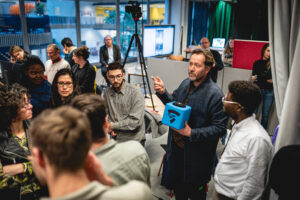



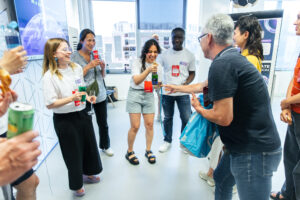
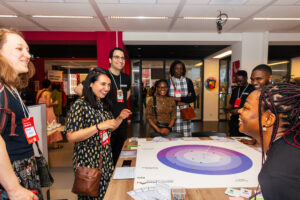
PROGRAMME
We have prepared an exciting programme for you:
17:00 – 17:30 Walk-in & welcome
17:30 – 18:30 Talk Show
Our Talk Show will shed light on alternative approaches to design for transformation. Speakers announced in December
18:30 – 20:00 Networking & drinks
There will be plenty of opportunities to connect with the trainees, partners and the extended Digital Society School community, so don’t miss out!
Waag Open: Expeditie DNA Digitaal

Nog nooit was het zo makkelijk om je DNA te laten testen, op afkomst, verwantschap en op gezondheid. Je staat daarbij je meest persoonlijke data af, zonder controle te hebben over wat er met die gegevens gebeurd. Gelukkig kan het digitaliseren van DNA binnenkort ook anders - op zo’n manier dat we een bruikbare database voor de samenleving bouwen, terwijl jij controle over je eigen data behoudt. Tijdens Waag Open op donderdag 12 december duiken we in de waarde en in de risico’s van een digitale DNA databank. Maak kennis met de eerste testpersonen en ontwerp zelf mee!
Kijk voor meer informatie op waag.org.
Datum: Donderdag 12 december
Tijd: 19:30 - 22:00 uur
Locatie: Waag, Nieuwmarkt 4, Amsterdam
Waag Open
Elke eerste donderdagavond van de maand opent Waag haar deuren! Kom langs om te discussiëren en te doen. Want we gaan niet alleen in discussie over maatschappelijke thema's en de toekomst – je leert daarnaast ook altijd iets praktisch. Iets dat je altijd al hebt willen uitproberen, zoals de 3D-printer in het FabLab, of juist iets dat je nooit had verwacht, zoals uitpluizen hoe DNA in elkaar zit in ons biotech-lab. Waag Open vindt plaats in de maakplaatsen op de eerste en tweede verdieping van het historische Waaggebouw op de Nieuwmarkt.
Jaarevent C-Creators 2024: Onderweg naar morgen - transitie in beweging 🌍 🔄

Jaarevent C-Creators 2024: Zet de Bouwketen in Beweging
<strong>Datum</strong>: 14 november 2024
<strong>Locatie</strong>: A Lab, Amsterdam
<strong>Tijd</strong>: 14.00 - 17.30 uur (inloop vanaf 13:30, met aansluitende borrel)
<strong>Thema</strong>: “Onderweg naar morgen – Transitie in beweging”
<strong>Beschrijving</strong>: Het Jaarevent 2024 van C-Creators brengt pioniers, beleidsmakers en ketenpartners samen om concrete stappen te zetten richting een circulaire toekomst in de bouw. Tijdens dit inspirerende evenement krijg je de kans om kennis op te doen, te netwerken en mee te denken over de toekomst van circulair bouwen.
Waarom deelnemen?
- Leer meer over de nieuwste innovaties in circulair bouwen.
- Netwerk met gelijkgestemden en ontdek nieuwe samenwerkingsmogelijkheden.
- Ontvang praktische handvatten en inzichten om direct toe te passen.
<strong>Hoogtepunten</strong>:
- 🎤 Keynote van Vincent Luyendijk over duurzame gebiedsontwikkeling.
- ☕️ Stakeholder Cafés over biobased bouwen, houtbouw en hergebruik.
- 🎮 Netwerkspel “Spaar ze allemaal” voor waardevolle connecties.
- 🌍 Interactieve Expo met inspirerende circulaire projecten.
<strong>Voor wie</strong>: Bouwprofessionals, woningcorporaties, architecten, ontwikkelaars, gemeenten, slopers en investeerders.
<strong>Aanmelden</strong>: Deelname is gratis, maar de plaatsen zijn beperkt!
🔗 Meld je nu aan en sluit je aan bij de koplopers in de circulaire bouwsector.
👇 💜 🤩 Co-Creation Opportunity 👇 💜 🤩

Calling all community engagement specialists shaping the future of our urban spaces! 📢
At Playground City🛝, we believe real impact happens when we build solutions together. The insights we’ve gained from incredible conversations at Placemaking Europe, World Summit AI, and soon at Smart City Expo World Congress are already shaping our roadmap—and now, we’re ready to bring in those who can help take it to the next level.
We’re building an ambassador community for dedicated community engagement professionals to join us in pioneering a platform created for (and with!) the people driving change in our cities.
As an ambassador, you’ll have early access to shape and use Playground City🛝 as it evolves, guiding its development with your insights. We’re also preparing exclusive perks just for you, like discounted pilot projects, early access to new features, and more exciting benefits (yes, also our amazing merch.. 😎).
If you’re a community engagement specialist, urban strategist, or resident leader ready to make an impact, comment “I’m in!” below, and we’ll follow up with details. We can't wait to meet you all!
Passionate about co-creation in urban spaces? Join Playground and make an impact! 🌍
#CommunityEngagement #UrbanInnovation #Placemaking #PlaygroundCity #CoCreation #AmbassadorProgram #SmartCities #UrbanImpact #PlaygroundCity
𝗛𝗼𝘄 𝗰𝗮𝗻 𝗖𝗦𝗥𝗗 𝗯𝗲 𝘁𝗵𝗲 𝗹𝗮𝘂𝗻𝗰𝗵𝗽𝗮𝗱 for 𝘆𝗼𝘂𝗿 𝘀𝘂𝘀𝘁𝗮𝗶𝗻𝗮𝗯𝗶𝗹𝗶𝘁𝘆 𝗷𝗼𝘂𝗿𝗻𝗲𝘆?

A systems approach is key.
Climate transition plans that lack a systemic perspective can unintentionally shift risks, disrupt supply chains, harm human rights, or even contribute to biodiversity loss. For example, switching to a low-carbon product that requires three times more land may address your carbon goals, but jeopardize your biodiversity targets.
Without considering these interdependencies, your climate strategy may become inefficient and require reworking as new issues arise.
𝗧𝗵𝗲 𝘀𝘆𝘀𝘁𝗲𝗺𝗶𝗰 𝘀𝗰𝗲𝗻𝗮𝗿𝗶𝗼👇
By addressing root causes and considering the ripple effects of climate decision-making in other areas, a systems lens ensures your plan goes beyond regulatory box-ticking.
Together, we can co-create effective action plans with your stakeholders and develop customized decision-making frameworks, accounting for material impacts on climate, nature, and people across your operations and value chain.
How? Learn how our Systemic Transition Suite can unlock your business’s full potential ⬇️
#BeyondCompliance #climatetransition #sustainabilityreporting #CSRD #ESG #circulareconomy
Red Light District Relocation: What do you think? 🤷🤦♀️

Amsterdam is set to relocate its iconic Red Light District from De Wallen to Europaboulevard, marking a significant shift in the city's approach to sex work and urban development.
This move aims to create a more structured and safe environment for sex workers while addressing concerns about over-tourism and its impact on local communities. We analyzed available data online to understand the hottest topics from affected groups.
<strong>See data insights on Playground Journal. Or listen to a short 5-minute podcast on this here.</strong>
This is your opportunity to engage in the conversation. Your insights and opinions matter in shaping a future that respects the city’s rich history while addressing the challenges and hopes of its diverse inhabitants.
The significance of this relocation lies in its potential to reshape Amsterdam's cultural and social landscape. It reflects the city's commitment to balancing the needs of residents, tourists, and sex workers, ensuring that the new Erotic Centre aligns with contemporary values while preserving the district's historical essence.
As this transformation unfolds, community input is vital. Residents, business owners, and other stakeholders are encouraged to contribute their thoughts and ideas to help shape the future of the new Red Light District. Your insights can influence the new facility's design, amenities, and safety features.
While communities can influence many aspects—such as building design, types of amenities, and community engagement processes—certain elements are fixed. The location of the new RLD has already been determined, as are existing laws and regulations governing sex work. Additionally, the core concept of the Erotic Centre and project timelines remain unchanged.
Let’s ensure that the new Red Light District reflects the values and aspirations of all who call Amsterdam home. Your voice matters!
Perspectief op een ‘Gifvrij Europa’ zonder gevaarlijke PFAS

Hoe brengen we Nederlands ZZS beleid en EU beleid “Chemicals Strategy for Sustainability; Towards a Toxic-Free Environment” in de praktijk?
Haast dagelijks horen we over gevaarlijke vervuiling door PFAS, bestrijdingsmiddelen of andere giftige stoffen. Hoe kan dit en vooral, wat zou het Nederlandse beleid moeten zijn voor deze zeer zorgwekkende stoffen in relatie tot het EU beleid 'Chemicals Strategy for Sustainability; Towards a Toxic-Free Environment'? Pakken we dit nu echt goed aan?
Blootstelling aan zeer zorgwekkende stoffen kan leiden tot allerlei ongewenste milieu- en gezondheidseffecten. Er is een lastig spanningsveld tussen de functionaliteit van het gebruik van de diverse chemische stoffen en de ongewenste negatieve effecten op onze gezondheid en het milieu. Waar staan we nu, wat werkt goed in het huidige beleid en waar moet het sterker? Tijdens dit middagsymposium onderzoeken we deze vragen en verdiepen we ons in de knelpunten in consumptiegedrag en essentieel gebruik van ZZS enerzijds en mogelijkheden tot vervanging anderzijds.
Met topsprekers en pitches over oplossingsrichtingen en transitiepaden verkennen we samen met de aanwezigen in de zaal een groene circulaire chemie en brengen we de perspectieven daarvan in beeld. We eindigen met een wetenschappelijk reflectie die echte oplossingen aandraagt. Op deze manier hopen we het bewustzijn en de kennisdeling over een groene circulaire chemie te vergroten en de invoering ervan te stimuleren.
Wees erbij op 9 oktober a.s. en laat je inspireren om bij te dragen aan een duurzamere en gifvrije toekomst!
Voorzitter van het symposium is Bart Krull (SustainLab)
13:00 Ontvangst (met koffie en thee)
13:30 Welkom en opening
- Opening door Antoine Heideveld, (voorzitter VVM, directeur Het Groene Brein) over de relatie van deze middag met Duurzame Dinsdag
- Welkom door Tom Smeelen, sectormanager Gezonde leefomgeving en Klimaat, Provincie Noord-Holland
13:45 Deel 1: Het probleem
Wetenschappelijke feiten en maatschappelijke context blootstelling chemische stoffen en welvaartziekten
- Zorgstoffen, waarom hebben we die?
Het spanningsveld tussen functionaliteit en ongewenste milieu- en gezondheidseffecten in beeld gebracht.
Door Majorie van Duursen, professor Environmental Health and Toxicology, Vrije Universiteit Amsterdam
14:15 Deel 2: Beleid
Een brede schets van het krachtenveld en de bewegingen in het beleid
- Waar staan we nu?
Beleid en aanpak zeer zorgwekkende stoffen Europees (SVHC / Reach / Bestrijdingsmiddelen) en nationaal (ZZS / Impuls Chemische Stoffen). Waar zit de kracht van het beleid, waar moet het mogelijk sterker? Wat zijn de knelpunten in consumptiegedrag en essentieel gebruik van ZZS enerzijds en mogelijkheden tot vervanging anderzijds.
Door Mieke Klooswijk, programmaleider Impulsprogramma Chemische Stoffen, Ministerie van Infrastructuur en Waterstaat
14:45 Pauze (met koffie en thee)
15:15 Deel 3: Pitches over oplossingsrichtingen/transitiepaden voor een groene circulaire chemie
Perspectieven in beeld: industrie, landbouw, politiek, wetenschap en consument. Pitches over de hordes, obstakels, oplossingsrichtingen én successen.
- Industrie: Nieuwe verbindingen voor de chemie (Rosienne Steensma, VNCI)
- Landbouw: Welke mogelijkheden voor en consequenties van vermindering van de impact van gewasbeschermingsmiddelen zijn er? (Volkert Engelsman, EOSTA)
- (Geo)Politiek / Internationalisering: Wat is de betere keuze? (Leo van der Biessen, Royal HaskoningDHV)
- Consumentengedrag: Wat kan en moet er anders? (Thijs Bouman, RUG)
15:45 Deel 4: Het gesprek over oplossingsrichtingen
Dagvoorzitter stelt vragen n.a.v. de pitches en daagt de zaal uit ook vragen te stellen. Een gesprek dat tot echte aanbevelingen leidt...
16:30 Deel 5: Hoe samen verder?
Wetenschap: Reflectie op de pitches en oplossingen vanuit de wetenschap.
Door Prof. Annemarie van Wezel, professor Environmental Ecology, Universiteit van Amsterdam
17:00 Borrel & netwerken
Waag Open: Dead Zones

Kunstenaars kunnen als geen ander een nieuw perspectief bieden op abstracte issues. Kunstenaar Suzette Bousema werkte samen met wetenschappers om actuele klimaatproblemen te visualiseren. Tijdens Waag Open op donderdag 3 oktober vertelt ze over Dead Zones: door de mens veroorzaakte zuurstofloze zones in de oceaan. Bousema presenteert ook haar werk Seaweedfilter, waarin zij verkent hoe zeewierboerderijen extra zuurstof kunnen creëren waar dat nodig is.
Daarna ga je zelf aan de slag met een eigen zeewierkunstwerk met de cyanotype techniek. Cyanotype, of blauwdruk, is een fotografische techniek waarbij de prints een blauwe kleur krijgen door belichting. 
Future Relics (cyanotype) door Suzette Bousema
Over de kunstenaar
Suzette Bousema (NL, 1995) visualiseert hedendaagse milieuonderwerpen in samenwerking met wetenschappers. Zij gebruikt haar kunst als middel om mens en wetenschap te verbinden. Planetaire omstandigheden en onze plaats daarin zijn het uitgangspunt in haar werk; de manier waarop de mens ingrijpt in de natuur en hoe we ons op individueel niveau tot de aarde verhouden. Ze werkt interdisciplinair met fotografie, grafiek, glasblazen, weven, geluid, geur en organische materialen zoals zeewier.
Tussen 19 en 22 september 2024 kun je het werk van Suzette Bousema ook zien in de expositie Behind the Design bij Waag, tijdens GLUE Amsterdam.
Programma
| 19:30 - 19:40 uur | Welkom en introductie |
| 19:40 - 20:40 uur | Presentatie door Suzette Bousema |
| 20:40 - 21:30 uur | Cyanotype kunstwerken maken |
| 21:30 - 22:00 uur | Borrel |
Toegankelijkheid
Mocht je krap bij kas zitten en wel graag aan dit evenement willen deelnemen, neem dan contact op met sanna [@] waag [punt] org.
Playful Placemaking: Gamification and AI in Urban Design

How can gamification reshape the way we design cities? 🤔
At Playground City 🛝, we’re excited to be part of <strong>Placemaking Week Europe 2024</strong>, which will take place in Rotterdam from <strong>September 24-27, 2024</strong>! 🎉
In collaboration with Studio Oa and <strong>City Makers</strong>, we’ll be hosting a session titled <strong>“Playful Placemaking: Gamification and AI in Urban Design”</strong>, under the Creating Place & Making It Last theme.
We’ll explore how gamification can improve the participatory process in placemaking, and how AI and digital tools can help us better understand and visualize changes in urban areas, using the Delfshaven area of Rotterdam as our case study 🌱🎮.
We look forward to connecting with you at the workshop, where we’ll explore how interactive, game-like elements and new technology can make urban design more inclusive, informed, and impactful.
Are you attending Placemaking Week? Let us know in the comments! We’d love to see you at our session.
Still need a ticket? Don’t wait—grab yours here: https://lnkd.in/eQQnUJVZ
Let’s create better cities together!
#Placemaking #UrbanDesign #SmartCities #CommunityEngagement #SustainableUrbanism #AIinUrbanPlanning #Gamification #RotterdamMakeItHappen #CreatingBetterCitiesTogether #PlacemakingEurope
Stay up to date
Get notified about new updates, opportunities or events that match your interests.

